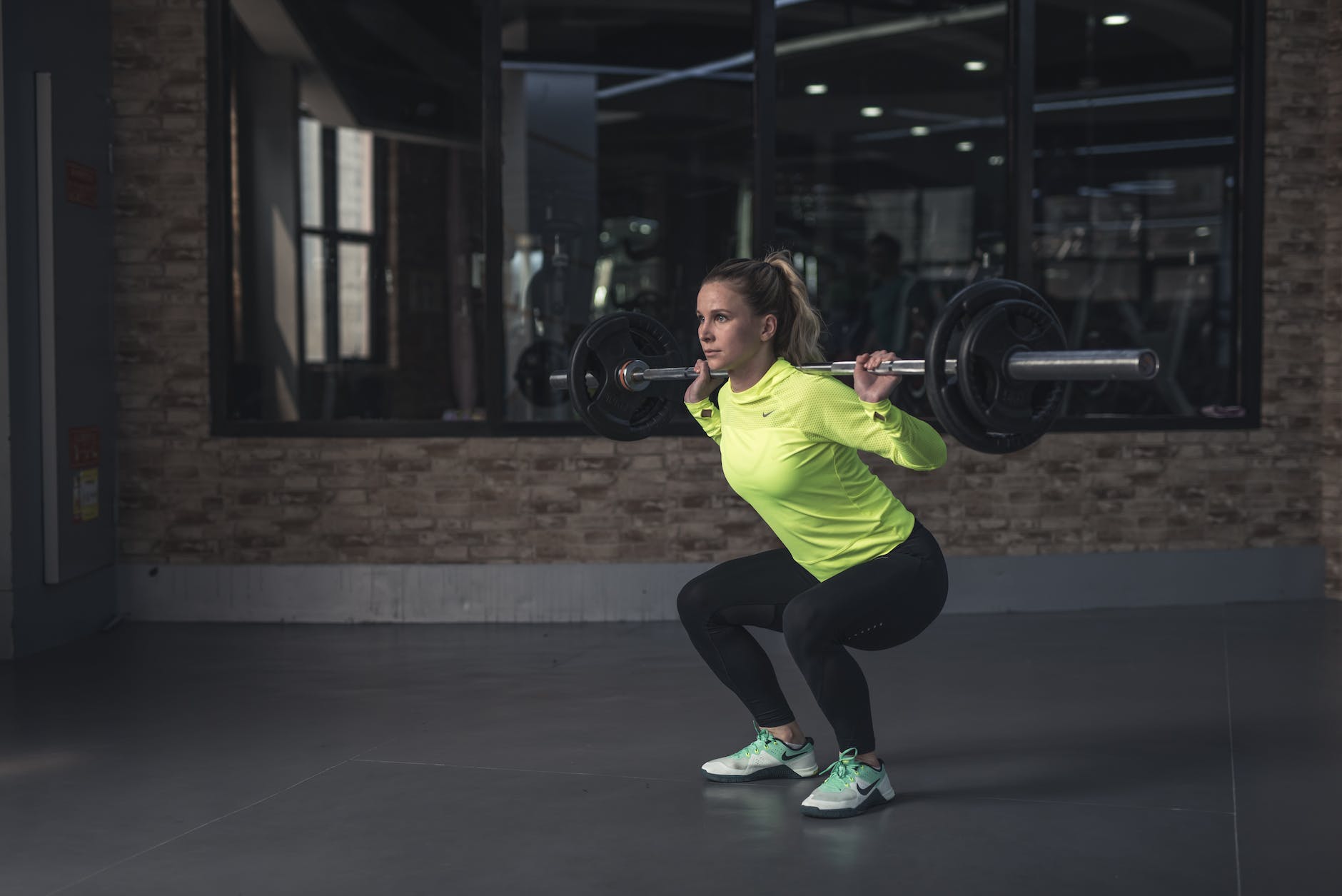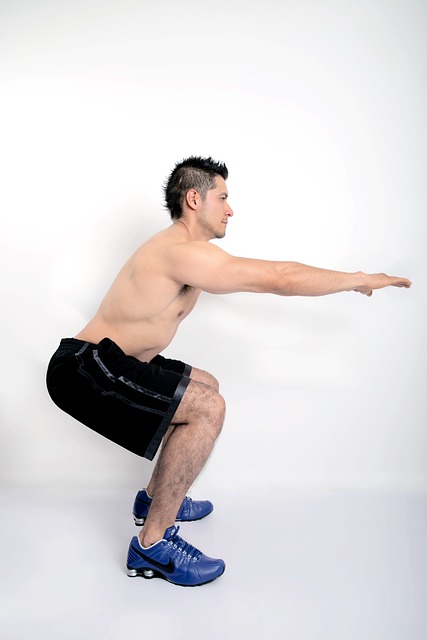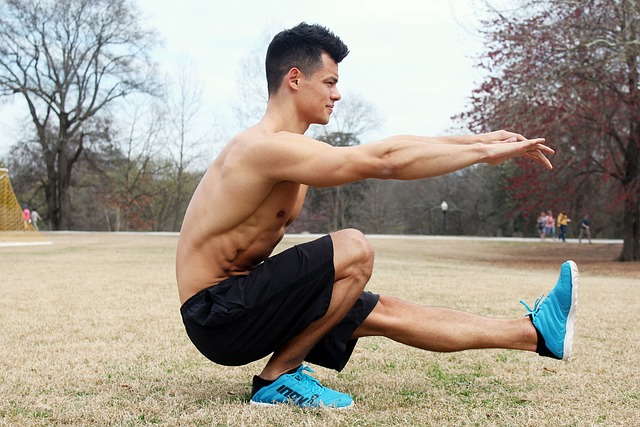Start with the basic squat and then go to several squat variations, which can help you activate other portions of the leg as well as the arms and shoulders. This might help keep your training interesting and difficult.
Squats are one of the best workouts you can do because they strengthen the lower body muscles while simultaneously engaging the core.
Squat Advantages
Squats improve the lower body muscles used in daily actions like walking, stair climbing, standing up, and sitting down. They can help avoid some forms of knee dislocations since they strengthen the muscles around the knee as well as the core.
They also help to enhance overall posture.
In general, strength training has numerous advantages and has a direct link to a lower risk of cardiovascular disease, diabetes, cancer, and premature mortality from any cause. Squats are considered low-risk in terms of injury when compared to other sports, and wide varieties may be performed without any equipment, making them an excellent addition to any training routine.
Basic Squat
This movement requires no weights or equipment (other than a chair if preferred) and is ideal for novices and anyone suffering from knee pain.
It’s also ideal for anyone looking to add more functionality to their lives, as this action resembles the movements made when sitting or standing.
- Place your feet hip or shoulder width apart. Stand in front of a chair if using one. Firm up your abs.
- Squat slowly towards the chair by bending your knees.
- Send your hips back, maintaining your head high and your torso straight. If it helps with balance, you can extend your arms.
- Pause here, or momentarily sit on the chair, and then engage the glutes to rise up and start stretching the legs.
- Extend your legs fully to return to a standing position, but don’t lock your knees.
This should be done in 1-3 sets of 10-16 repetitions.
If you’re using a chair, try a more difficult variant by squatting till you’re only hovering over the chair. You can also use weights to increase the intensity.
Squat Using Only One Dumbbell
When you can accomplish more than 16 chair squats, it’s time to step up the difficulty of this move. You can do it by squatting while holding a dumbbell or a kettlebell. This is an excellent method to increase intensity without putting more strain on the spine.
- Place your feet hip or shoulder width apart.
- Hold a medium-heavy dumbbell out in front of you, arms straight and elbows slightly bent.
- Squat down by bending your knees. Stop when your knees are 90 degrees or before you lose your natural back arch.
- Contract your glutes and legs while maintaining a powerful torso.
- Slowly raise your legs without locking your knees.
Repeat for a total of 1-3 sets of 10-16 repetitions.
Squat with dumbbells
Another dumbbell squat variation involves gripping a dumbbell or kettlebell at chest level. Holding the weight in this posture strengthens the glutes, hips, thighs, and core muscles. It also works the upper body as an added advantage.
- Place your feet hip or shoulder width apart.
- In front of the chest, place a medium to heavy dumbbell or kettlebell. Maintain a comfortable posture with your shoulders and neck.
- Squat down by bending your knees until your knees are at a 90-degree angle or when you lose your natural back arch.
- Set your hips back as if you were ready to sit in a chair. Avoid bending the knees forward so that they protrude.
- Contract your glutes and legs while maintaining a powerful torso.
- Stand up slowly, without locking the knees.
Repeat for a total of 1-3 sets of 10-16 repetitions.
Squat with a Barbell
Barbell squats are a more intensive sort of squat that needs greater work from the body’s major muscles, the glutes. If done correctly, barbell squats are an excellent supplement to any workout. Adding weight to your shoulders shifts a large portion of the strain to your spine. Therefore it’s critical to maintain proper form when completing this move.
- Place your feet hip or shoulder width apart.
- Place the barbell on the trapezius muscles, or the “meaty” region of the shoulders, right above the shoulders.
- Squat down by bending your knees until your knees are at a 90-degree angle or when you lose your natural back arch.
- Contract your glutes and legs while maintaining a powerful torso.
- Slowly raise your legs without locking your knees.
Repeat for a total of 1-3 sets of 10-16 repetitions.

Wide Squat or Sumo Squat
The sumo squat, also known as the broad squat, comprises a foot positioning modification that helps target your leg muscles in numerous ways. A sumo squat incorporates a little more inner thigh than a regular squat. This is a good variation to add to your practice if you are up for a challenge. Just be cautious when lowering yourself, and just go as far as your flexibility allows.
- At a comfortable angle, point your toes out and take a wide stance. Don’t go too far out because your knees will need to be aligned with your toes.
- To add weight, place a single dumbbell in front or dumbbells on the upper thighs or a barbell behind your head or on the shoulders.
- Bend the knees and squat, maintaining the knees in line with the toes, abs clenched, and back straight.
- To begin, push back without locking the knees.
A rep for a total of 1-3 sets of 10-16 reps.
Squat with Front Barbell
In a front barbell squat, the barbell will rest on the front of your shoulders, which is kept in position by crossing the arms over the bar or using an underhand grip. However, keep in mind that this variation needs a lot of wrist and shoulder mobility and may not be suitable for everyone.
By shifting the weight in front of you rather than behind you, you shift your center of gravity, putting greater emphasis on training the quads. You’ll need to use a smaller weight for this motion because of how you’re holding the weight.
- Place your feet hip or shoulder width apart.
- To hold the barbell, position it on the front of the shoulders and cross your arms over it, or utilize an underhand grip.
- Squat down by bending your knees. Because of how you’re carrying the weight, your torso will remain upright, and you may not be able to squat as low, so keep your balance in mind.
- As you carefully rise back up, contract your glutes and legs without locking your knees.
Repeat for a total of 1-3 sets of 10-16 repetitions.
Sits against a wall
The wall sits from traditional squats. This exercise requires you to hold an isometric, or static, position for a set amount of time rather than moving through the whole range of motion. This is a fantastic exercise from our list of squat variations that can be done anywhere and without any equipment. This technique helps you increase lower-body strength while also improving posture.
- Lean against a wall about 2 feet in front of you. Hold weights or compress a ball between your knees to increase the intensity.
- Slide down and walk your feet out till your knees are 90 degrees, then hold for 20-60 seconds. Maintain abdominal contraction. Leg lifts can be added to increase the intensity.
- Return to the beginning and repeat, holding the squat at varying angles to engage the lower body in different ways.
Rest between sets, then repeat 3 times.
Single-Legged Squats
The one-legged squat is a more advanced and most difficult exercise among from squat variations that can be challenging to master the first time. Putting your entire weight on one leg will test your balance and stability while also increasing the intensity of your workout. When just starting out, this variation can be done using an exercise ball for assistance.
- Lean against a wall with an exercise ball behind your lower back.
- To find your equilibrium, lift your left foot slightly off the ground while moving your right foot closer to the center.
- Contract the muscles in your right leg and, while keeping your left leg raised, lower into a squat (just as low as you can). You can add balance by resting your hands against the wall.
- Push back to the starting position and complete all reps on the right leg before swapping sides.
Once you’re comfortable doing the exercise with assistance, move away from the wall and do one-legged squats without the ball.
If you don’t have a ball, here are some alternatives:
- Place a weight bench in front of you and do a one-legged squat as if you were going to sit on the bench.
- While performing squats on one leg, you can place your hand against a wall to help you balance.
- To keep your balance while completing single-leg squats, use an upright body bar.
Advice and Directions on squat variations
There are other squat-related rules to bear in mind, depending on your goals and degree of fitness. If you’re a newbie, start with bodyweight squats and gradually progress to weighted squats. You may want to go to more advanced versions from list of squat variations, such as front squats, barbell squats, and one-legged squats, as you gain more experience.
It’s critical to use good form to reap the full advantages of this strength training motion. Keep your toes and knees in line. Make sure your shoulders are back and that your lower back has a natural arch. Throughout the exercise, keep the head and neck in a neutral position.
Furthermore, throughout the action, keep the weight over the ankles and the heels on the floor. Remember to send your hips back instead of your knees forward.
To Conclude on Squat Variations
Certain types of squats can increase the risk of injury in starting workouts. If novice squat exercises feel difficult, it is vital to use perfect technique and avoid attempting more advanced routines.
If you are pregnant, recuperating from an accident, or have a medical condition, it is best to consult with your doctor before beginning a new fitness plan to confirm that it is safe for you to perform.
If you feel any pain while completing some of these squat variations, stop and consult with your healthcare professional and/or physical therapist.
Squats serve to strengthen the glute, hip, and thigh muscles. Squat variants can also engage various parts of the leg, as well as the core and upper body.
If you are having trouble executing squats or are searching for a more intensive squat variation, you should contact a personal trainer who can provide further assistance and help you attain your goals.


